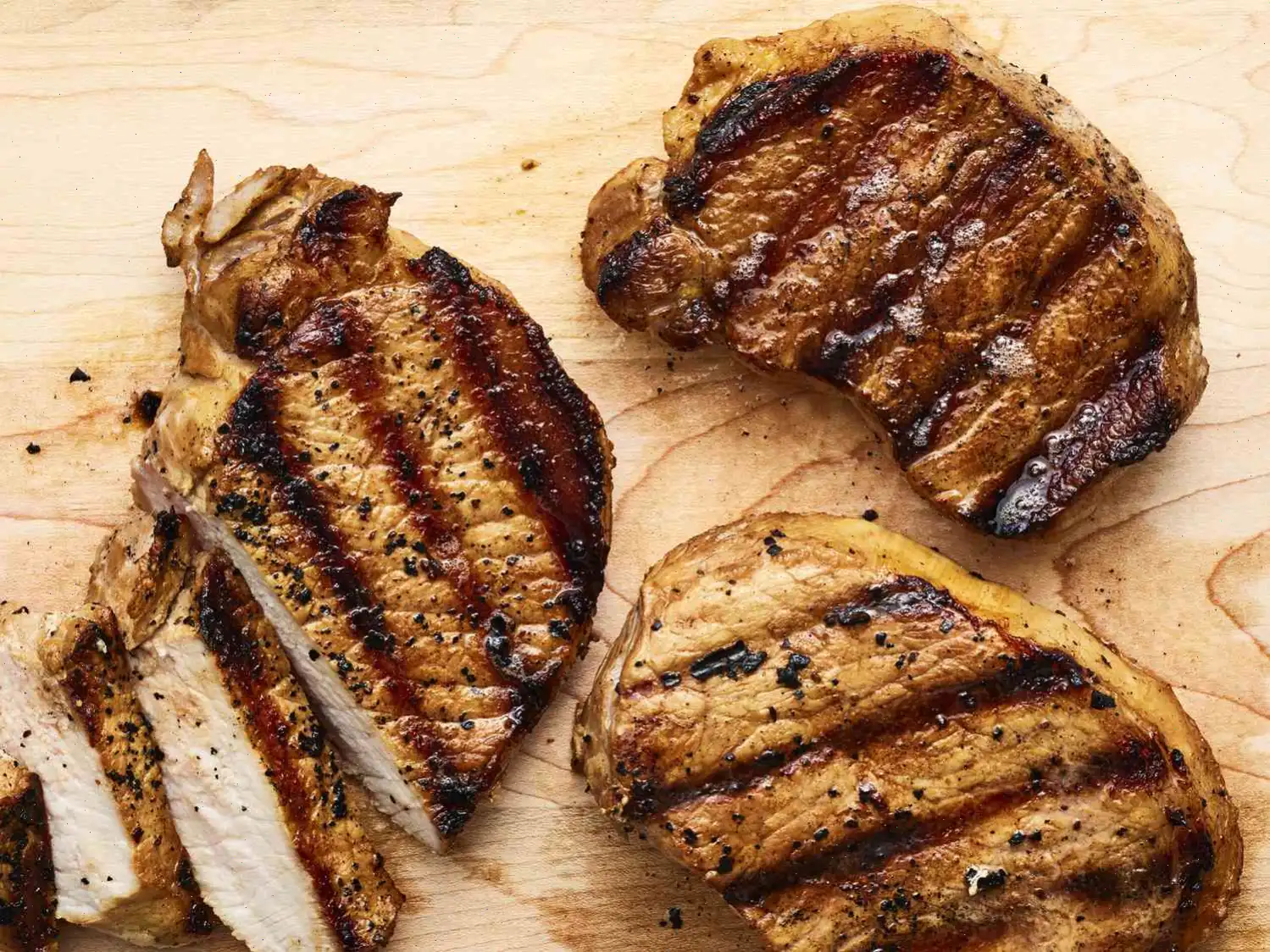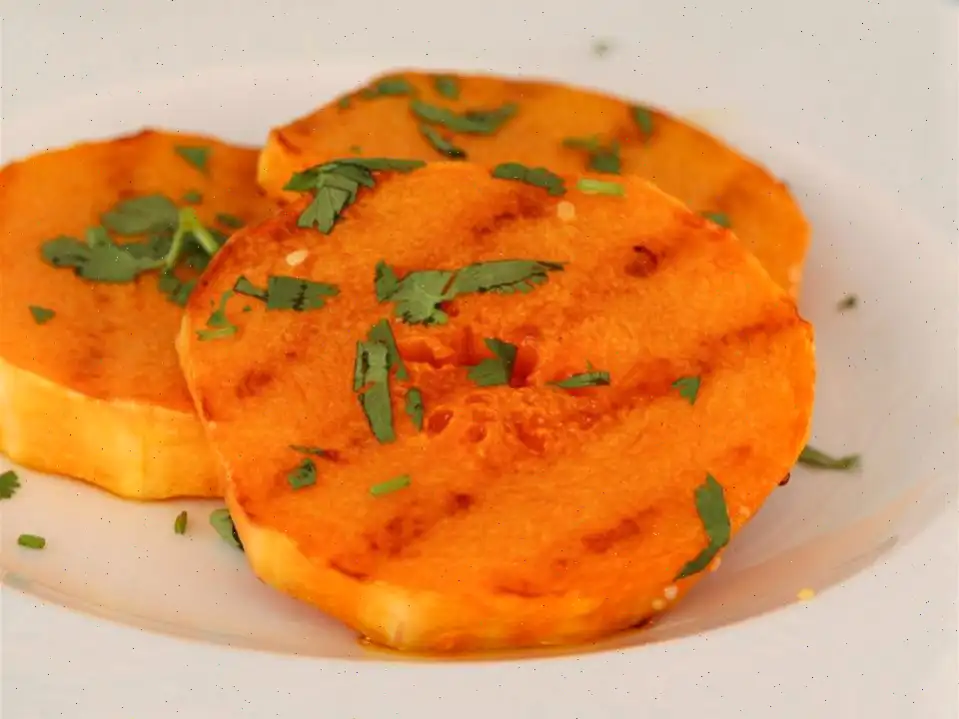
Hibachi Zucchini Recipe
This simple and flavorful stir-fry recipe combines the fresh crunch of zucchini with the aromatic kick of garlic and ginger. It makes a perfect side dish or a light meal that can be whipped up in no time.
Ingredients
- 1 teaspoon vegetable oil
- 1 small onion, sliced into petals
- 1 teaspoon minced garlic
- 1 teaspoon ginger paste
- 1 large zucchini, cut into 2-inch long sticks
- 2 tablespoons lower-sodium soy sauce
- 1 tablespoon sesame oil
- 1/2 teaspoon salt
- 1/4 teaspoon freshly ground black pepper
- 1 tablespoon toasted sesame seeds for garnish (optional)
Directions
1. Heat vegetable oil in a large skillet over medium-high heat.
2. Add the sliced onions and saut, stirring frequently, for about 4 minutes until they begin to soften and turn golden.
3. Stir in the minced garlic and ginger paste. Cook for an additional 1 minute, allowing the flavors to blend and the garlic to become fragrant.
4. Add the zucchini sticks to the skillet. Continue cooking for another 3 minutes, stirring constantly to ensure the zucchini cooks evenly.
5. Pour in the soy sauce, sesame oil, salt, and black pepper. Stir everything together and cook for another 2 minutes, or until the zucchini reaches your desired level of tenderness.
6. Garnish with toasted sesame seeds, if desired, and serve immediately.
Cook's Note
Ginger paste is typically sold in tubes in the produce section of most grocery stores.
Nutrition Facts (per serving)
| Nutrition Information | Amount per Serving |
|---|---|
| Calories | 61 |
| Total Fat | 5g (6% DV) |
| Saturated Fat | 1g (3% DV) |
| Cholesterol | 0mg (0% DV) |
| Sodium | 432mg (19% DV) |
| Total Carbohydrate | 4g (1% DV) |
| Dietary Fiber | 1g (4% DV) |
| Total Sugars | 2g |
| Protein | 1g (3% DV) |
| Vitamin C | 9mg (10% DV) |
| Calcium | 32mg (2% DV) |
| Iron | 1mg (3% DV) |
| Potassium | 212mg (5% DV) |
Note: Percent Daily Values are based on a 2,000 calorie diet. Your daily values may be higher or lower depending on your calorie needs.
Disclaimer: Nutrient information is not available for all ingredients. If you are following a medically restrictive diet, please consult your doctor or registered dietitian before preparing this recipe.
The Story Behind Hibachi Zucchini
Hibachi zucchini, a beloved side dish at Japanese steakhouse-style restaurants, traces its origins to the broader hibachi cooking tradition in Japan. Hibachi, which literally means fire bowl, originally referred to a small, portable charcoal grill used for cooking. While traditional Japanese hibachi dishes focused on meats and seafood, the adaptation for Western audiences introduced vegetables like zucchini, quickly becoming a staple in Japanese-American cuisine. This transformation reflects both the simplicity and versatility of hibachi-style cooking, allowing home cooks to recreate the flavors of a steakhouse in their own kitchens.
Regional Variations
While hibachi zucchini is commonly associated with Japanese steakhouses in the United States, regional variations exist. In the Southern U.S., the dish may be spiced with a touch of cayenne or paired with local ingredients like bell peppers. On the West Coast, chefs often favor organic zucchini and a lighter hand with soy sauce, emphasizing the natural sweetness and texture of the vegetable. In contrast, some East Coast versions incorporate a richer sesame oil drizzle and additional garlic for a bolder flavor. Each region adapts the basic recipe to suit local tastes while preserving the signature quick saut method over high heat.
How It Differs From Similar Dishes
Hibachi zucchini stands apart from other sauted or stir-fried zucchini dishes primarily through its preparation and seasoning. Unlike traditional stir-fry, which often uses a variety of vegetables and sauces, hibachi zucchini focuses on simplicity and precision. The zucchini is cut into uniform sticks, cooked quickly over high heat, and seasoned with a minimalist combination of soy sauce, sesame oil, garlic, and ginger. This allows the natural flavor of the zucchini to shine, a contrast to heavier vegetable casseroles or stews where the vegetable is often overshadowed by other ingredients.
Where It Is Usually Served
Hibachi zucchini is most commonly served as a side dish in Japanese steakhouses alongside grilled meats such as steak, chicken, or shrimp. It is also popular in bento boxes or as part of a light, home-cooked dinner when paired with rice or noodles. Its quick cooking time and bold but simple flavors make it ideal for both casual and more formal dining settings. Some restaurants even offer it as a vegetarian option, highlighting its versatility and appeal to a wide audience.
Interesting Facts
Despite its humble ingredients, hibachi zucchini has a few surprising points of interest. For example, the dishs fast-cooking method preserves most of the zucchinis nutrients, including vitamin C and potassium. Toasted sesame seeds, often used as a garnish, not only add flavor but also provide healthy fats and a subtle crunch. Additionally, the dish exemplifies the Japanese culinary principle of shun, which emphasizes using ingredients at their peak freshness. Finally, hibachi zucchini has become a cultural bridge, introducing many people to Japanese-style flavors without requiring complex techniques or exotic ingredients.
You can listen to this recipe in AI audio format. Simply click the play button below to listen to the content in a format that suits you best. It’s a great way to absorb information on the go!
FAQ about Hibachi Zucchini Recipe
Comments
Andrew Martinez
03/18/2025 02:41:36 PM
Quick and easy recipe with delicious flavors. I followed the instructions exactly and would love to serve it alongside chicken.
Jonathan Anderson
04/08/2024 03:32:28 PM
This dish was scrumptious, quick, and simple to make. I combined it with Lowe's Foods "Pig Kahuna fully cooked sausage for a speedy meal. I sliced the sausage and added it towards the end of cooking the zucchini. The combination of flavors was fantastic!








